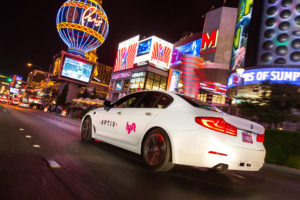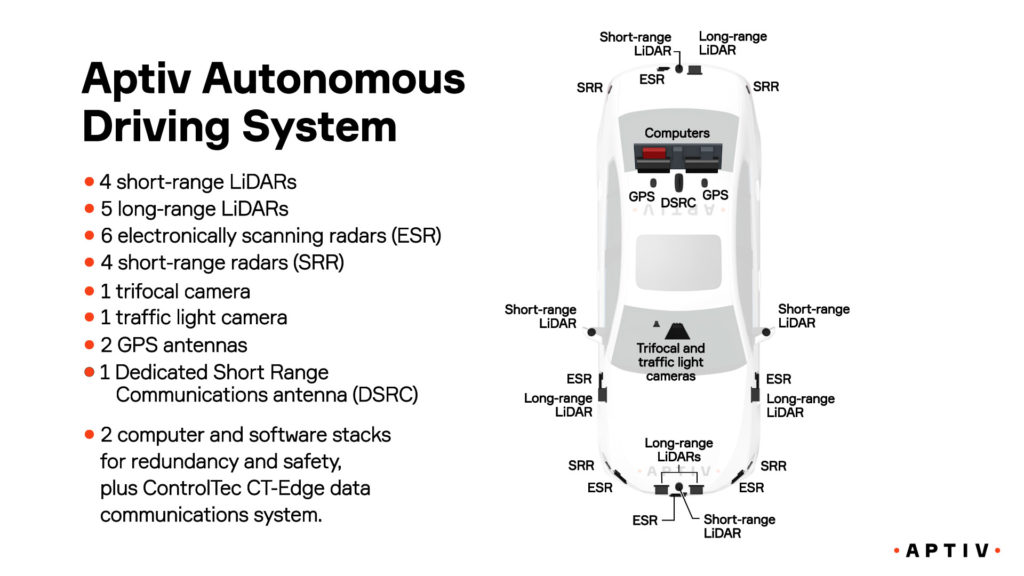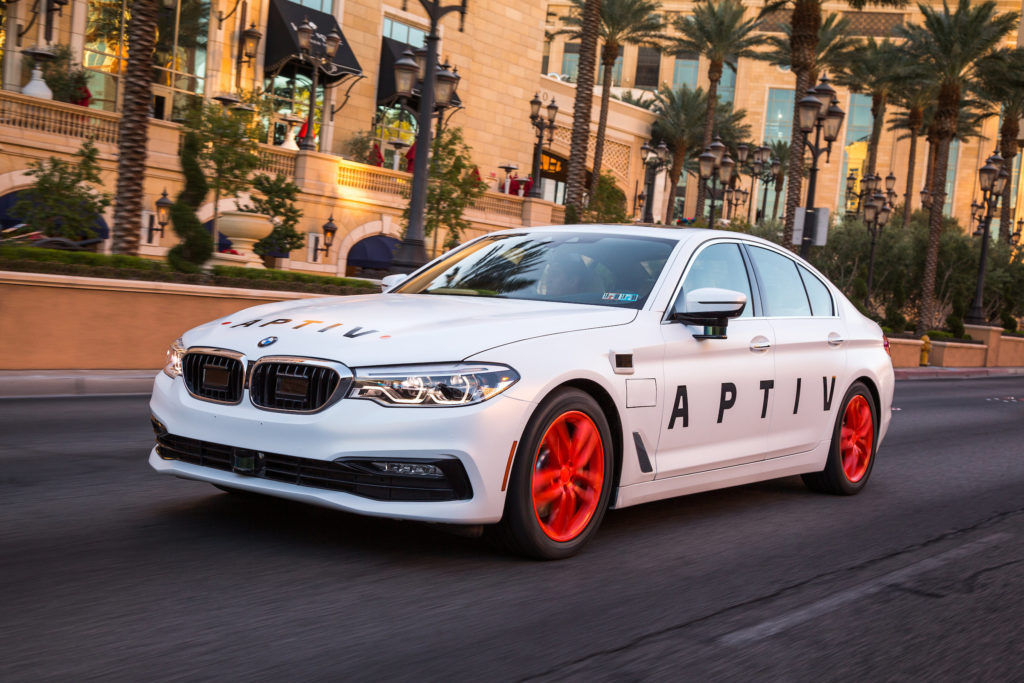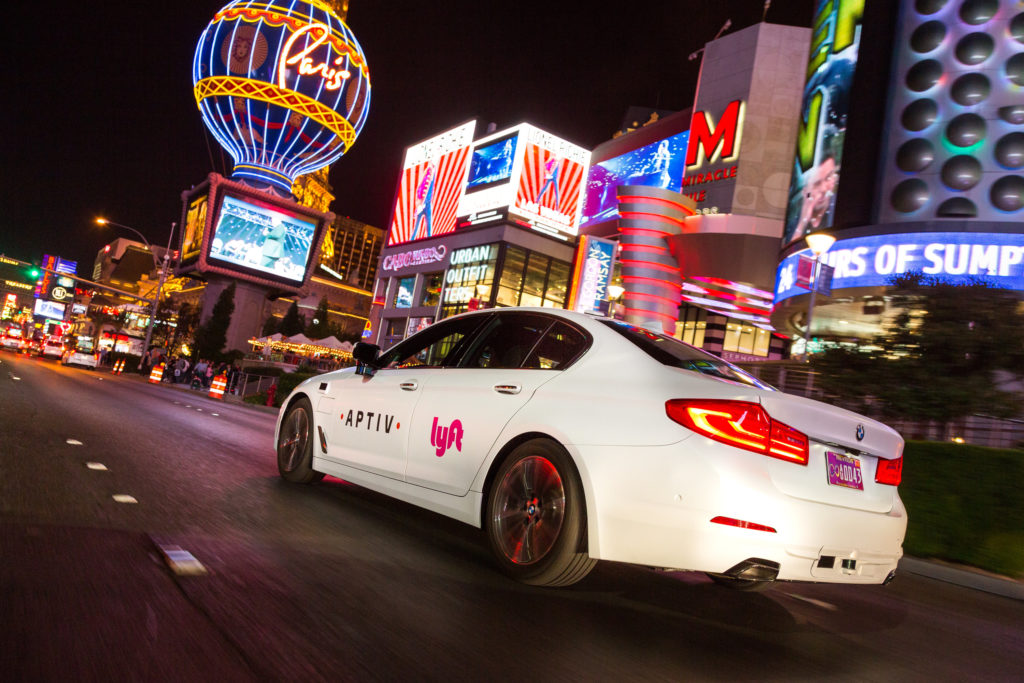
Aptiv self-driving car incorporates many sensors within auto body design
By onMarket Trends | Repair Operations | Technology
Aptiv last week announced it would offer autonomous car rides to Lyft users during this week’s Consumer Electronics Show with self-driving technology “seamlessly integrated” into the car body.
A diagram of this integration suggests that future collision repairers will encounter few panels and closures without some kind of radar or LIDAR behind them if such a format is used for privately-owned and fleet cars, whether partially or completely autonomous.
This could dramatically curtail panel repairs and body filler application and demand greater painter attention to mil thickness, based on some of the restrictions found today on surfaces covering advanced driver assistance system sensors. It also could affect aftermarket parts usage if OEMs issue restrictions similar to those tied to windshield cameras.
“Aptiv’s automated driving technology is seamlessly integrated into any design without cumbersome sensors on the top or sides of the vehicle, unlike many other automated vehicles on the road today,” Aptiv wrote in a news release.
The design also suggests a potentially lucrative market for replacing and recalibrating expensive side-view mirrors containing LIDAR pucks (which can be found atop the car in other companies’ layouts). During the transition from an all-human fleet to a mostly autonomous one, it’s likely that a few of these mirrors could be clipped, battered, vandalized or otherwise have a rough day.
CCC industry analyst Susanna Gotsch wrote in an email in fall 2015 that the company was on track to log 575,000 mirrors replaced out of a total of 13 million claims that year, but “keep in mind that these are claims counts. I suspect that many times that mirrors are hit in parking lots that a claim is not made, rather paid out of pocket too.”
If the number of non-total loss collisions was really more like about 18-19 million, she wrote, 800,000 mirrors could have been in play for 2015.
LIDAR pucks are also visible on or around the bumper fascias on the front and rear of the vehicle — two other areas commonly damaged during collisions.
Aptiv expects to have the technology “ready to scale in production by 2019,” which fits in nicely with Level 4 AI 2019-21 targets announced by OEMs. Under SAE Level 4 autonomy, a human is no longer needed to take over on a moment’s notice — the car is a good enough driver to be the primary and fail-safe motorist.
Aptiv subsidiary nuTonomy has been testing self-driving taxis in Singapore and intends to launch a “widely-available commercial robo-taxi service” in that country this year.
This is coming, folks. Maybe not in markets with bad weather, and probably not at first outside of certain designated areas — Aptiv’s Vegas demonstration this year only drops off passengers at “more than 20” locations and picks up from just one spot — but repairers catering to clear, sunny urban areas probably should watch this trend closely.
The Vegas demonstration
The Vegas demonstration will occur under specific conditions, but Aptiv seemed to suggest it’d be more complicated than a 6.3-mile loop offered last CES by the company.
Lyft users can call for a self-driving car ride from one parking lot of the Las Vegas Convention center between Tuesday and Friday. The vehicle will still have “a safety driver in the front seat and an in-car host, who together will provide a safe, and educational, experience.”
“This partnership represents a real-life application of scalable, automated driving technology that will have a significant impact on improving safety, emissions and urban congestion challenges,” Aptiv CEO Kevin Clark said of its partnership with Lyft. “Aptiv’s automated driving platform is the most advanced automated system available and combined with Lyft’s intuitive user app will allow CES attendees to have a true point-to-point self-driving experience. It is an exciting demonstration of the future of mobility at work.”
More information:
“Aptiv and Lyft to Bring Self-Driving Rides to Las Vegas in January 2018”
Aptiv, Jan. 2, 2018
Images:
Aptiv on Jan. 2, 2018, announced it would offer autonomous car rides to Lyft users during this week’s Consumer Electronics Show with self-driving technology “seamlessly integrated” into the car body. (John F. Martin for Aptive/Provided by Aptiv)
“Aptiv’s automated driving technology is seamlessly integrated into any design without cumbersome sensors on the top or sides of the vehicle, unlike many other automated vehicles on the road today,” Aptiv wrote in a January 2018 news release. (Provided by Aptiv)
An autonomous Aptiv car is seen in Las Vegas Dec. 1, 2017. (Photo by John F. Martin for Aptiv/Provided by Aptiv)



